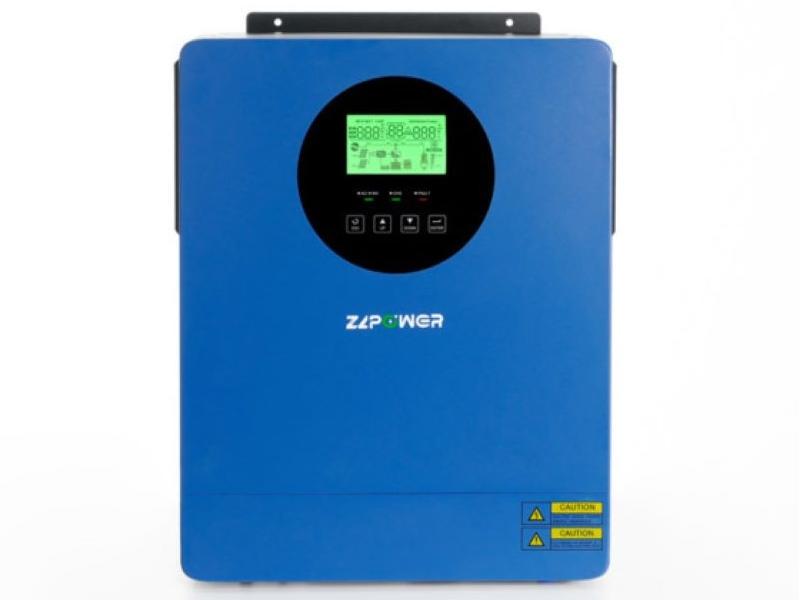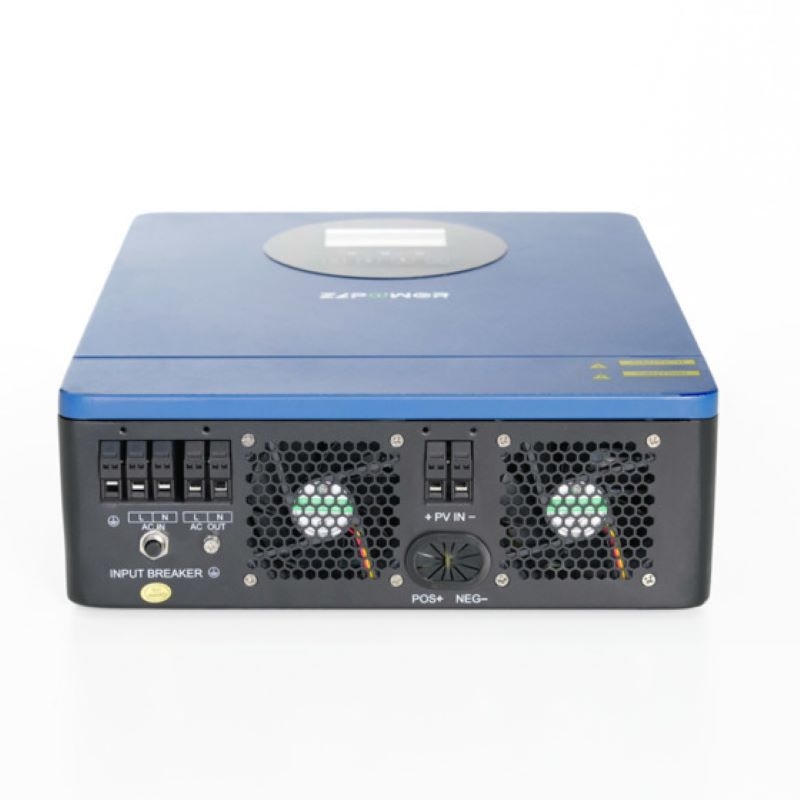

When it comes to energy systems making the most of their efficiency is crucial for optimal performance and savings on costs. Selecting an inverter with an MPPT (Maximum Power Point Tracking) solar charge controller can greatly impact the outcome of your setup‘s power generation capabilities. This technology is specifically crafted to extract power from your solar panels regardless of the varying conditions they may encounter. Unlike charge controllers that stick to fixed voltage settings most of the time MPPT controllers are more dynamic, in nature as they continuously adjust their input to align with the best powerpoint of your solar array.
Solar panels do not produce an amount of power; their output changes based on factors such as sunlight intensity and temperature fluctuations.MPPT controllers stand out for their ability to constantly monitor these conditions and adapt to maximize the efficiency of the system. This feature enables them to capture energy, than conventional PWM controllers that use Pulse Width Modulation.
For example, if your solar panel works best at 18 volts while your battery system operates at 12 volts the MPPT controller can help fill this difference by changing voltage into more current for charging purposes This method guarantees that no energy goes to waste and helps you get the most out of your setup By enhancing energy collection a solar inverter with MPPT capability becomes an essential element, for individuals interested in optimizing their use of eco-friendly power systems.
Dealing with shading or unpredictable weather conditions poses a major hurdle, in solar energy systems as it can significantly diminish the efficiency of conventional solar setups; nevertheless, when a solar inverter incorporates an MPPT charge controller these concerns are addressed efficiently.
Shadows from trees or buildings and even passing clouds can cause inconsistencies in the energy output of a panel system. Standard controllers face challenges in adjusting to these changing conditions. On the contrary MPPT technology excels, in situations where it constantly recalculates and fine-tunes its settings to maximize energy generation from partially shaded panels.
Besides shadows affecting panels‘ performance; weather changes such as abrupt cloud cover or temperature shifts can also play a role in their efficiency level being impacted accordingly. Solar panels tend to produce voltage when temperatures increase and higher voltage when temperatures decrease. To counter these fluctuations in performance due to factors like weather conditions; an MPPT controller works by actively monitoring and adjusting the array operation to maintain the optimal performance point, under varying conditions.
Addressing fluctuations in performance due to shadows or unpredictable weather conditions with MPPT technology-equipped systems helps maintain a dependable energy output level The use of this feature improves the overall efficiency of the system and guarantees effective charging of your batteries even, in unfavorable weather situations.
Maintaining the health and lifespan of your batteries is crucial for grid or hybrid solar energy setups to function effectively in the long run. Batteries are a financial commitment; hence it is vital to charge them correctly and efficiently to extend their longevity. An MPPT charge controller is instrumental, in accomplishing this objective.
Conventional charge regulators frequently lack accuracy, in overseeing battery charging cycles where excessive or inadequate charging may result in sulfation or other types of harm that deteriorate battery efficiency over time. Conversely, MPPT controllers are equipped with algorithms that closely monitor the battery condition and modify charging settings appropriately.
For instance, in times of bulk charging an MPPT controller supplies the amount of current until the battery attains its absorption voltage level. After reaching this point it switches to absorption mode to uphold a voltage while gradually decreasing the flow of current. Subsequently, during float charging mode it supplies an amount of current to ensure that the battery remains fully charged without experiencing any strain from overcharging.
This exact regulation doesn‘t just guarantee energy transfer; it also safeguards batteries from needless damage and deterioration. In addition to that advantage is the fact that MPPT controllers harvest energy, from solar panels compared to PWM alternatives which accelerates the charging time of batteries and boosts the system efficiency overall.
When you add an MPPT charge controller to your inverter system you‘re not just maximizing energy efficiency but also protecting one of the priciest parts, in your setup – the batteries.
Acquiring an inverter with a built-in MPPT controller goes beyond keeping up with technological advancements. It‘s about getting your energy setup ready for what lies ahead in the future landscape of renewable energy sources. With the increasing need for energy solutions worldwide, it is crucial to have a system that can adjust and function efficiently in diverse circumstances. MPPT technology guarantees that your solar configuration is equipped to handle obstacles such as varying sunlight levels shading issues and shifts, in weather patterns effectively.
An impressive aspect of an inverter with MPPT technology is its capability to adapt to the latest developments in solar panel technology. New panels are now being created with improved efficiency and unique voltage properties. By incorporating an MPPT charge controller into your system it stays updated with these advancements allowing for smooth upgrades without the need, for a complete system replacement.
In addition to that as energy storage options advance MPPT controllers have the ability to adjust to emerging battery technologies such as lithium-ion and flow batteries. This flexibility makes them a popular option, for individuals and companies aiming to safeguard their setups for the future.
When dealing with energy systems like solar power setups and inverters equipped with MPPT charge controllers play a key role in ensuring efficiency and dependability are top priorities in mind when using such technology effectively as they work to optimize power generation while reducing the need, for frequent maintenance checks and upkeep tasks that can be time-consuming and costly to manage in the long run.
Through adapting to changing factors like the strength of sunlight and temperature variations MPPT controllers guarantee steady operation all day long. This feature leads to advantages such as quicker battery charging and less reliance, on-grid electricity at times of high demand.
Furthermore incorporating an MPPT controller seamlessly into your inverter simplifies the setup of your system. With fewer parts involved there are chances of breakdowns leading to reduced maintenance expenses in the long run. For individuals looking for an efficient solution, without sacrificing performance this pairing emerges as the top choice.

Selecting the solar inverter with a built-in MPPT charge controller requires careful thought to guarantee you maximize the value of your investment upfront Assess your energy requirements and grasp the capability of your solar panel setup This knowledge enables you to pick an inverter that aligns with your systems requirements while also allowing for future growth opportunities. You can trust ZLPOWER who can provide high-quality solar inverter with MPPT controller.
Checking out the quality and reputation of the manufacturer is key. Trustworthy brands usually offer customer support and warranties to make sure you‘re covered and supported whenever you need assistance.
If you need any solar inverter, please contact us!
A: MPPT, or Maximum Power Point Tracking, is a technology in solar charge controllers. It dynamically adjusts input to match the solar array‘s optimal power point, unlike fixed - voltage traditional controllers. It boosts efficiency on solar panels‘ non - linear curves, harvesting more energy than PWM ones.
A: MPPT technology dynamically optimizes solar panel performance under partial shading and temperature variations. Unlike traditional controllers, it adjusts parameters in real-time to maximize energy harvest despite shadows, cloud cover, or voltage fluctuations, ensuring stable output.